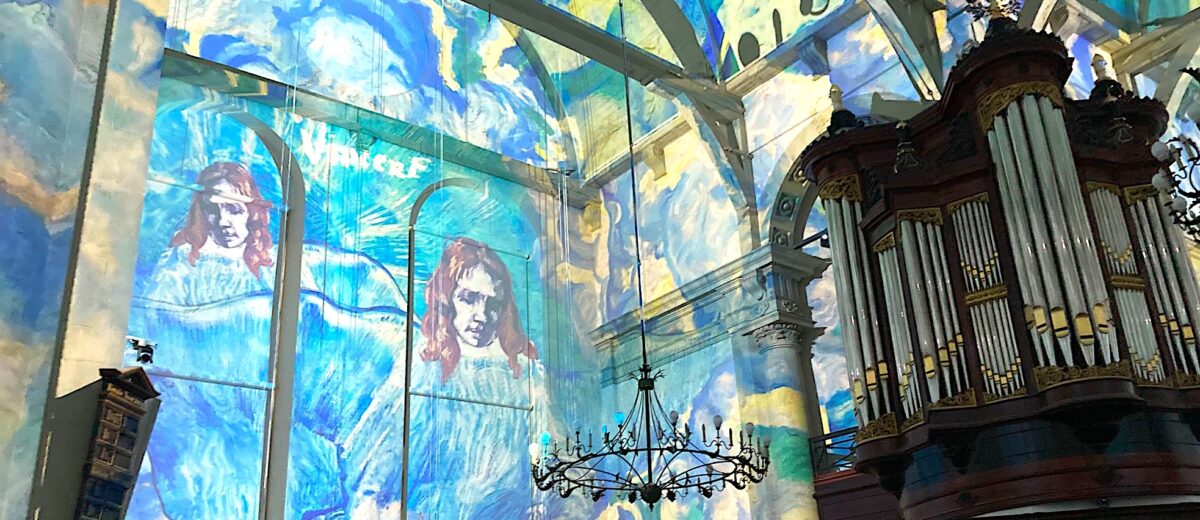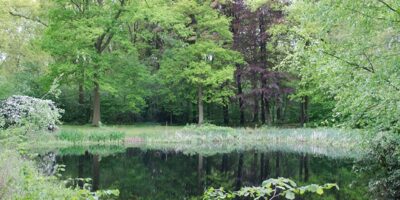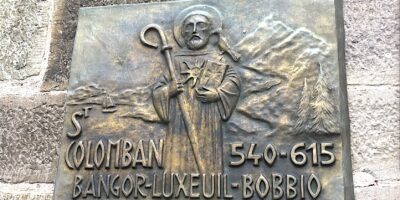Worshippers in the church my wife and I attend in the heart of Amsterdam were treated last Sunday to a 360 degree ‘immersive experience’ fusing the art of two of the world’s most famous artists, Vincent van Gogh and Rembrandt van Rijn.
It was a special presentation of Vincent meets Rembrandt, The Untold Story which has been running in the church building as a public exhibition since the beginning of the summer.
Van Gogh regularly attended the Noorderkerk (and numerous other churches) in 1877-78 while studying theology in the city before he decided to become an artist. He once wrote to his brother Theo about a woman he had seen in the church who reminded him of a Rembrandt portrait, Sleeping Old Woman.
Rembrandt’s own ‘sleeping’ remains lie just 700 metres along the Prinsengracht in the Westerkerk. The budding artist had arrived in the city from his home town of Leiden a decade after the Noorderkerk was built in the early 1620’s as Amsterdam’s Golden Age was booming. One of the first Dutch churches built after the Reformation, the church’s form – a Greek cross form with the pulpit almost in the centre – reflects the Protestant emphasis on the centrality of God’s Word, rather than the altar. Its large clear glass windows make for a light and open interior.
Those windows were screened off for the 40-minute light and sound presentation, allowing a neck-turning stream of animated images to be cast by 38 projectors onto the walls, windows and ceiling, merging the works of both artists.
‘Magician’
Before becoming an artist, Vincent admired Rembrandt as a man and a Christian rather than as a painter. In his 650-plus letters to Theo expressing, works now widely recognised as literary masterpieces in themselves, he often referred to his 17th century mentor whose works inspired much of Vincent’s own work, as he describes in his letters. In the presentation’s narrative, based on these writings, we hear Vincent say: ’There’s something of Rembrandt in the Gospels or of the Gospels in Rembrandt’.
During his theology study, Vincent would visit the Trippen House near the Nieuwmarkt which served as the Rijksmuseum before the current building was opened, to view Rembrandt’s work. While working for an art gallery in Paris in the mid-1870s, he became spellbound by the Rembrandts in the Louvre. A decade later, when he visited the newly opened Rijksmuseum in 1885, for example, he told Theo he would gladly have given ten years of his life to have been able to sit for fourteen days in front of The Jewish Bride ‘with barely a crust of dry bread to eat’. Of the painting, he wrote, “what an intimate, what an infinitely sympathetic painting! Rembrandt goes so deep into the mysterious that he says things for which there are no words in any language. It is with justice that they call Rembrandt – magician.’
While Vincent’s letters clearly reveal his interest in the ‘magician’ throughout his short life, this is not obvious in his style. On occasion he based a work directly on a Rembrandt, such as his colour interpretation of an etching, The raising of Lazarus, painted shortly before his own tragic death in 1890. Van Gogh wanted to emulate Rembrandt’s ideas and intentions, but not his 250-year-old style. He strove to express the soul of his subject in his portraits in his own way, just as the master had done. Vincent saw Rembrandt as a realist working from nature yet depicting the supernatural as something ‘natural’.
Matchless
In his own work, Vincent often alluded to what he called ‘the highest, the very highest, the infinite’, when describing the spirituality of Rembrandt’s work. He used yellows to depict the divine presence in nature, as in sunflowers, wheat fields, the sun and moon, in the lit windows of houses at night, or blues for the infinite, the eternal. The Potato Eaters and Cafe Terrace at Night for example, both allude to the Last Supper.
An early sketch of Vincent’s, entitled Worn out, of an old peasant man seated head in hands has recently resurfaced. He reproduced this study as a lithograph and then, in his last year, as a painting, clothing the man in blue working overalls, the colour of eternity. Entitled At Eternity’s Gate, the painted version shows the man in front of a fireplace, flames depicting the fleeting human life, flickering and dying. ‘One of the strongest proofs of the existence of “quelque chose là-haut” [something on high,’ wrote Vincent to his brother, ‘namely, the existence of God and eternity – (is) certainly in the infinitely touching expression of such a little old man, of which he himself is perhaps unconscious, when he is sitting quietly in his corner by the fire…. At the same time there is something noble, something great that cannot be destined for the worms.’
My YWAM colleague Simon Wood has written an enlightening video presentation about the spiritual meaning of these studies, well worth watching.
While Vincent rejected a lifeless, institutional Christianity, he affirmed that ‘Christ alone, of all the philosophers … has affirmed eternal life, the infinity of time, the nothingness of death…. This matchless artist … made living men, immortals.’
Till next week,



